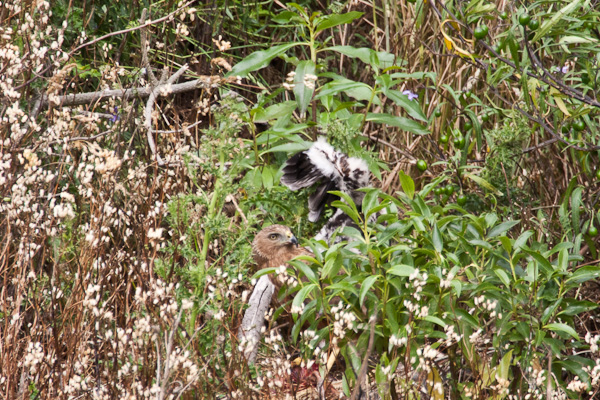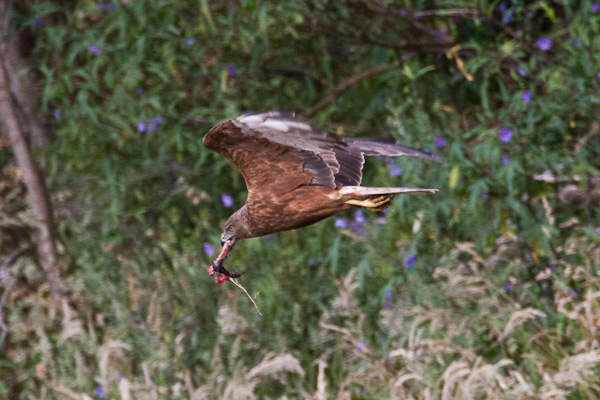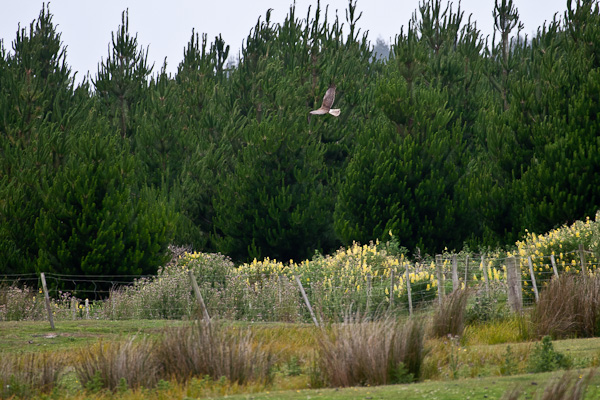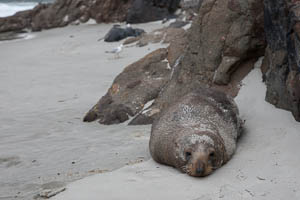As we drove around the twisting gravel roads of the Otago peninsula, there seemed to be harriers around every corner, gliding along hillsides, playing high up in the wind currents, gleaning morsels from the short surface vegetation of the inlet edges.
Turning a corner in the looping track around Hooper’s Inlet, I saw one glide in to some vegetation at the bottom of a wooded slope, and disappear from view. When we arrived opposite this point, I scanned the spot carefully with binoculars, but could see no sign of the bird or a nest. I noted the spot and we carried on our way.
A couple of days later, I decided to have a closer or longer look. As I drove around the corner that brought the nest site into view, there was the harrier just landing again, but this time as I pulled up against the fence, there was a chick in view exercising its wings.
- Get down out of sight, you idiot!
After a short while, adult and chick disappeared into the foliage, and I settled down to await developments. Eventually, I could again make out a chick, which seemed to be making feeding movements. Time passed, and the grey shape behind the vegetation resolved itself into two chicks.
Meanwhile, the adults appeared, gliding along the ridge above the nest, and I readied myself for the shot I was looking for, of an adult about to land in the nest. However, it didn’t happen – one bird flew off while the other landed in a tree some distance away. After a while, I noticed that it had gone, but I had not seen it fly off. All was revealed when the head of an adult bird appeared with the chicks – it had flown down to the ground and walked into the nest, presumably to avoid giving away its location with me sitting in my car watching.
There was more activity discernible behind the vegetation, some wing-flapping and other movements indicating feeding, and eventually, I had to revise numbers up again – there were three chicks in the nest!
Eventually, the adult flew up from the nest are with a large bone in its bill and flew off. There was no more activity visible, so I left after a while.
Several days later, I drove around Papanui Inlet on a cold and windy day, and when I arrived at the car park at the end of the track, I decided to sit and watch birds in the open area in front of me, rather than face the walk to Victory Beach.
There was a lot of birds on the sheep-grazed pasture in front of me – paradise shelducks, pukeko, spur-winged plovers and a small flock of starlings, but the stars were a pair of harriers which quartered the ground, using the wind superbly to hover, to glide around clumps of rushes and folds in the ground, to catch the wind and wheel away to a new area to hunt.
At the back of the pasture was a block of conifers, and one of the harrier’s favourite moves was to glide through the upper branches, head down, no doubt hoping to surprise an unwary rabbit. A place for a hide and a photo-opportunity!





